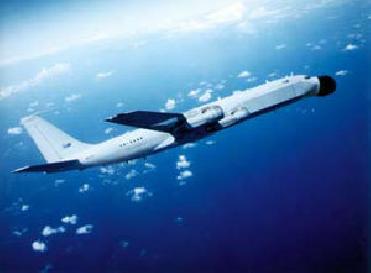
Chilean Boeing 707with Phalcon radar fitted to its nose. A File photo
NEW DELHI (BNS): India is negotiating the purchase of three more Airborne Early Warning and Control Systems, even as it is expecting the delivery of the first of three AWACS from Israel Aerospace Industries (IAI), a media report said.
�New Delhi wants to buy three more Phalcon radars for mounting on aircraft, but IAI is asking for 30 percent more money than the first batch,� DefenseNews quoting a defence official said Thursday.
The first of India�s three AWACS, a Phalcon Israeli radar system mounted on a Russian IL-76 aircraft, will arrive in Agra this month. The other two Phalcons, Phased Array L-Band Conformal Radar, are expected next year.
The Indian Air Force plans to beam data from the AWACS through a dedicated satellite under the nascent joint Aerospace Command. The Phalcon radar can track 60 targets simultaneously out to 350 kilometers.
The AWACS' electronics must include a Multi-role Electronically Scanned Array radar system that can simultaneously handle fighter control, and air, sea and area search; 300-nautical-mile Identification-Friend-or-Foe system; electronic warfare defenses; and electronic support subsystems, a senior Air Force official said.
The aircraft should have a payload of 9,831 kilograms, an empty weight of 46,606 kilograms and a maximum takeoff weight of 77,564 kilograms. It should also have a cruise speed of 853 kilometers per hour, a range of 7,000 kilometers and a service ceiling of 41,000 feet, he added.
The Phalcon known as �eye in the sky�, is an airborne radar that can pick up enemy fighters, incoming missiles and even ground troop movements from a distance of over 400 km. The deal for the first batch of AWACS was signed in 2004 for $1.1 billion.
 Previous Article
Previous Article Next Article
Next Article













The Indian Air Force, in its flight trials evaluation report submitted before the Defence Ministry l..
view articleAn insight into the Medium Multi-Role Combat Aircraft competition...
view articleSky enthusiasts can now spot the International Space Station (ISS) commanded by Indian-American astr..
view article